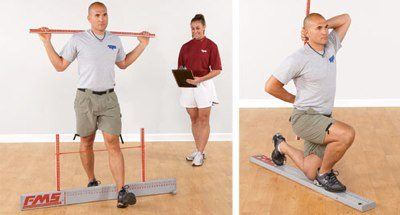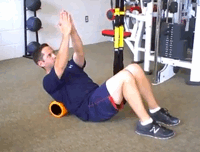I am often asked by students or people attending one of my seminars, “what is the one thing you do that you find works the best.” What a loaded question! I wish it were that simple that I could teach everyone just one magic technique. I have been reflecting on this question for several months, planning on writing a post to provide an answer. I took me sometime to figure out how I wanted to answer the question, but I think I might have an answer
The One Things I Do That Works the Best
The one thing that I would say that I do that works “the best” is probably something we should all be doing with everyone. It’s not a stretch, it’s not an exercise, it’s not the latest fad in equipment, and it’s not the lastest manual technique. It’s actually so simple, that it took me awhile to figure it out. It is assessing and Reassessing.
A proper assessment and reassessement is by far the best thing we can do for every patient and client we encounter. This is really the key to understanding each individual, what they need, and what works for them. Everything should start with a proper assessment and then after treament or training, reassess! Do it every time you work with that person and even multiple times a session.
[quote]Ask them, “what is your primary complaint?” Assess it. Quantify it. Treat it. Reassess it.[/quote]
This simple concept can have many meanings. At the simplest level, imagine if you were working with a weight loss client and didn’t assess their body weight. How would you know what was or wasn’t working? How would you know how much improvement that client has made?
For the clinician, we have many evaluation and assessment tools – range of motion, joint mobility, strength, flexibility, and many many more. But these measurements are irrelevant to the patient. They don’t really care if they gained 10 degrees of motion. They simply want to feel better and move better.
OK, your shoulder hurts. When does it hurt? What can you do to recreate that pain? Great – you just established a baseline that you can reassess. Don’t get me wrong, you still want to take objective measure, but you now have a real life baseline assessment that the patient can feel.
This is why tools like the FMS and SFMA are valuable – systematic methods of assessing movement. This is especially true in the fitness fields, where assessments are even more limited. Quantify the quality and feel of movement to assess changes.

Ultimately, this is going to always lead to better outcomes – instead of just applying treatment or exercise and hoping it works, assess what really works and adjust as needed.
Assess and Reassess
How do you apply this? The wrong way would be to just start working on someone that complains “my back hurts.” “Well, hop up and let’s start throwing some massage techniques and exercises at it.” In this example, there was no assessment, just treatment, so what do you reassess? Pain? That is not always the best assessment.
Maybe a better way would be to assess when and how the back hurts. What movements bother you? What can’t you do? Now, provide care to that person and reassess what you just observed. Simple, yet a powerful message when a person stands up and says, “wow, I can now touch my toes, that really worked!”
Here is an example of a recent patient I evaluated with complaints of left sided diffuse mid thoracic and rib pain. I provided a comprehensive evaluation, but I will just cut to the chase and outline the important details. His primary complaint was pain. I could of just started trying to treat the area to reduce sympotms and essentially “chase the pain.” However, my primary focus was on his limited multisegmental rotation to the left.
Multisegmental rotation doesn’t tell us enough, so I dug deeper. He had a moderate loss of thoracic rotation to the left. I could of stopped here as the location of his symptoms were in this area, but I again dug deeper. I was fine with his hip mobility. However, I found that his pelvis was shifted with a left anterior tilt, causing his entire pelvis and SI joint to rotate to the right. Subsequently, his lumbar spine was orientated slightly to the right, meaning his “neutral” was actually rotated to the right slightly, causing what looked like limited rotation to the left.

If I just stopped here, I would have restored half of his dysfunction, and I bet he would have slipped right back to where he started.
I next went to the pelvis and with a few exercises and manual techniques improved his pelvic alignment. Reassessment of thoracic rotation and multisegmental rotation showed normal symmetrical movement, and naturally a reduction in his complaints of pain.
That is the power of assessing and reassessing. Not just once, but multiple times in one session so that I can narrow down the effectiveness of each technique as best as possible.
The Power of Reassessment
That was a pretty good example of how I really narrowed down and enhanced by treatments by assessing and reassessing. To summarize some of the key points:
- Helps you individualize and find what works. This is the no-brainer concept, to see if there was an immediate improvement that can be directly correlated to what you just did to the person.
- Helps you find out what doesn’t work! Don’t underestimate this one. By properly assessing and reassessing you also find out what doesn’t work, which is just as valuable so you can shift gears and try another approach.
- This is also diagnostic. By assessing what does and doesn’t work you may also narrow down the exact dysfunction. Perhaps their limited thoracic rotation is related to soft tissue changes rather than joint mobility.
- Helps buy in. Lastly, but probably most importantly, assessing and reassessing helps build buy in, confidence, and compliance from the person. They will see immediate benefit in what you do.
That is probably what I would consider the one thing that we all need to do with every patient or client we see – assess and reassess, what do you think?
[hr]




